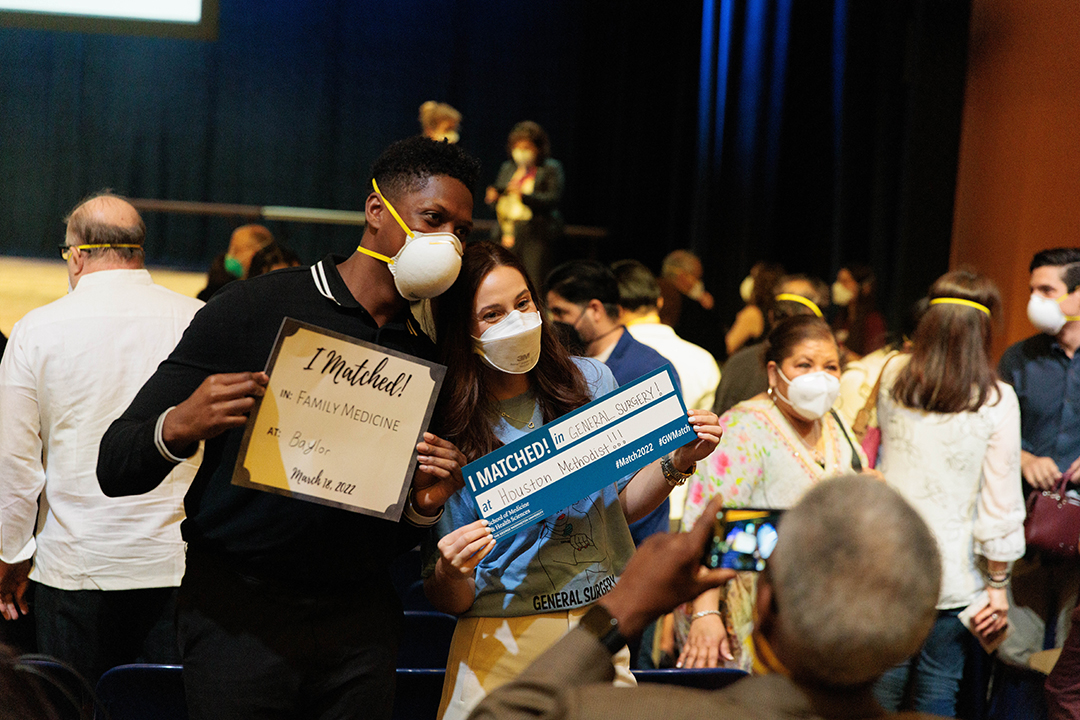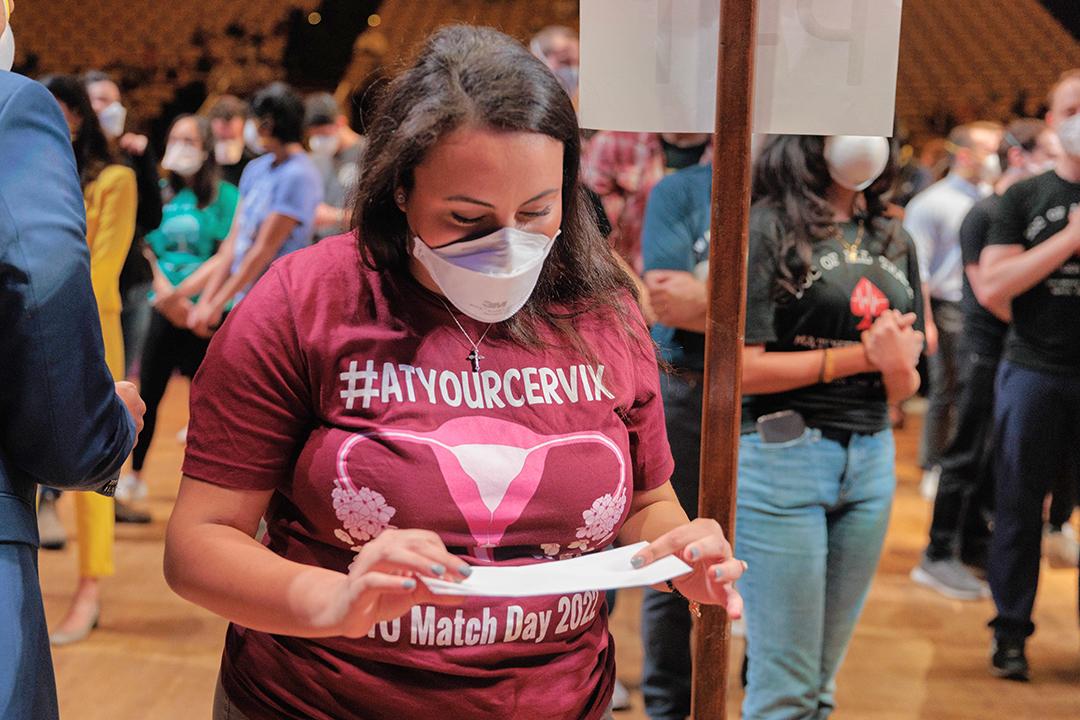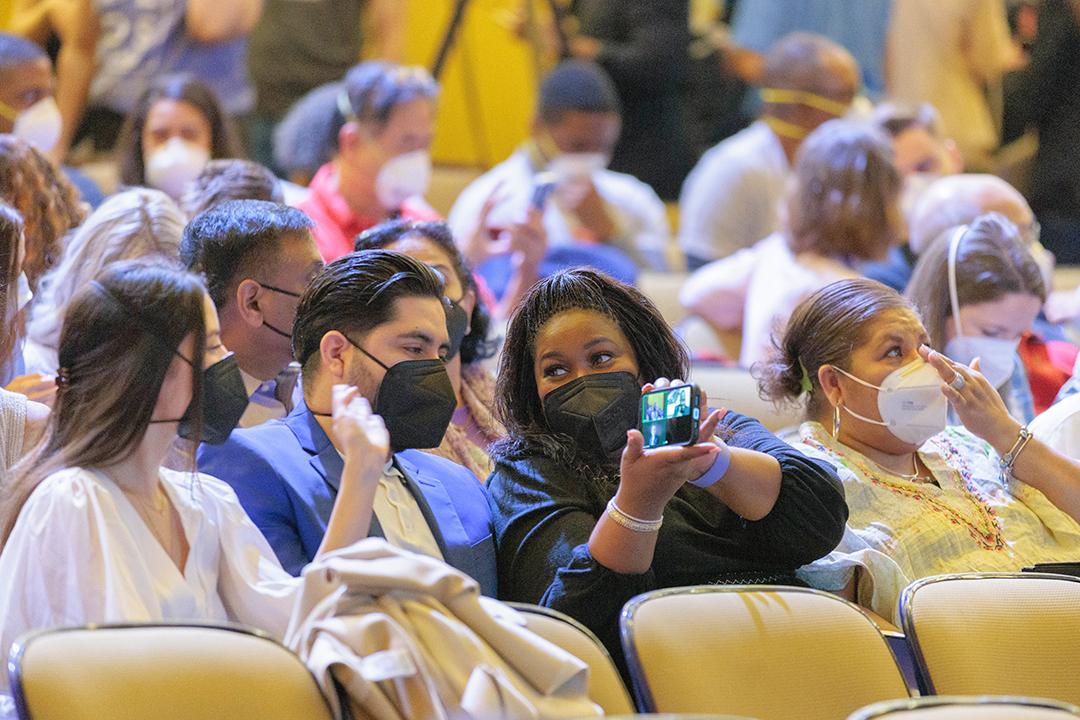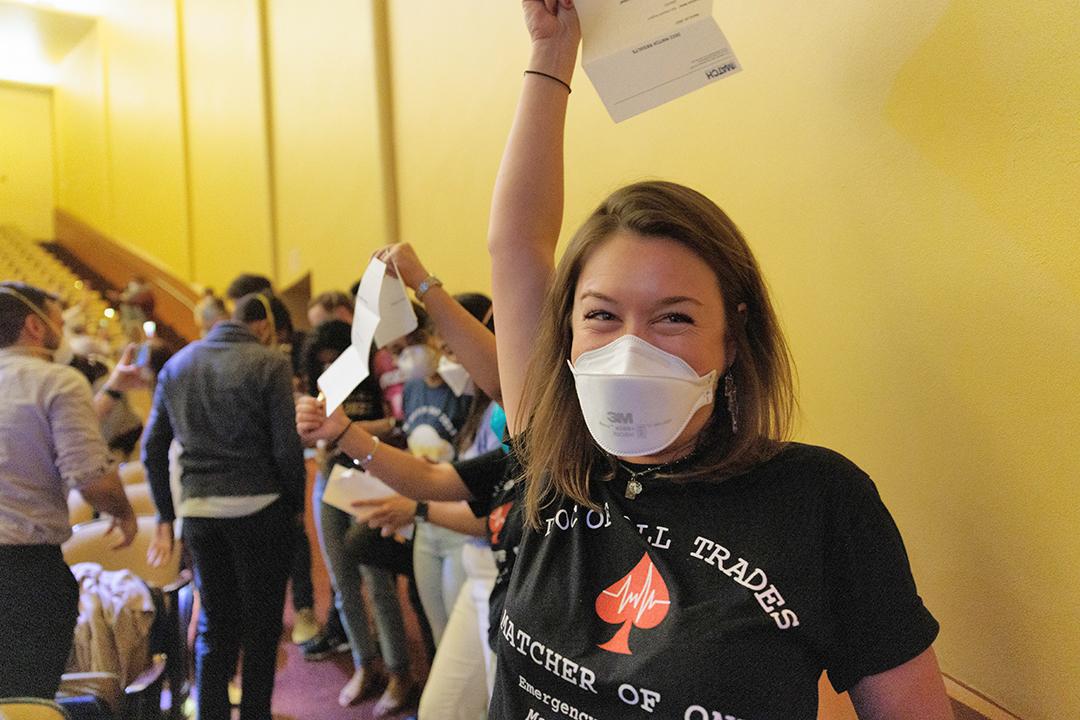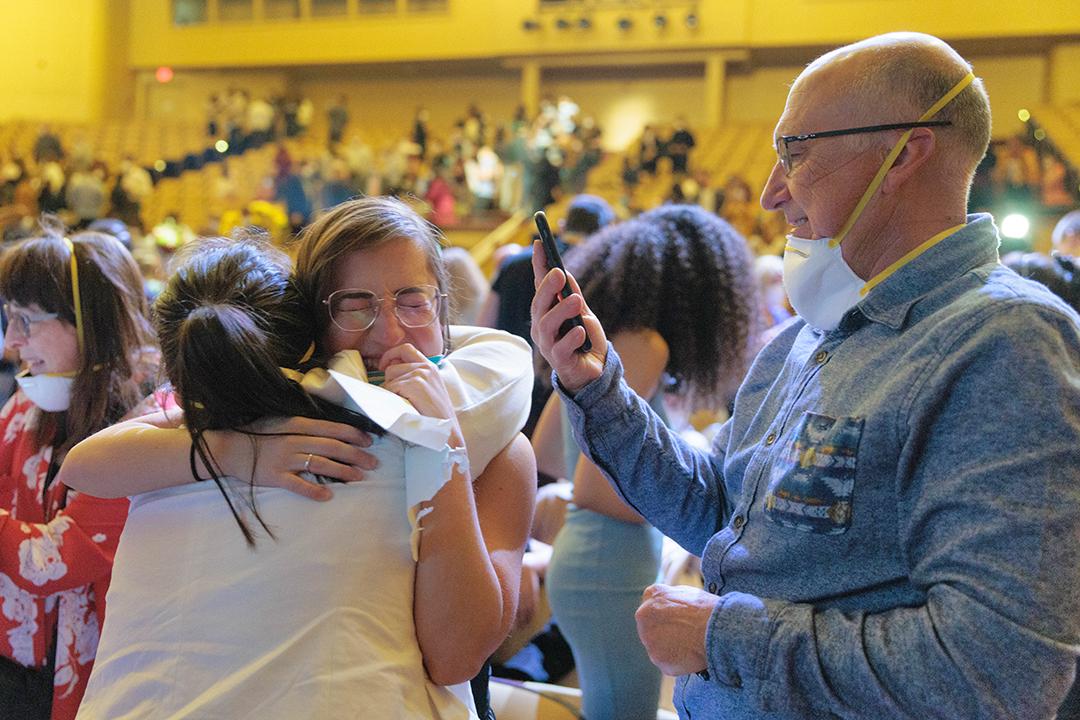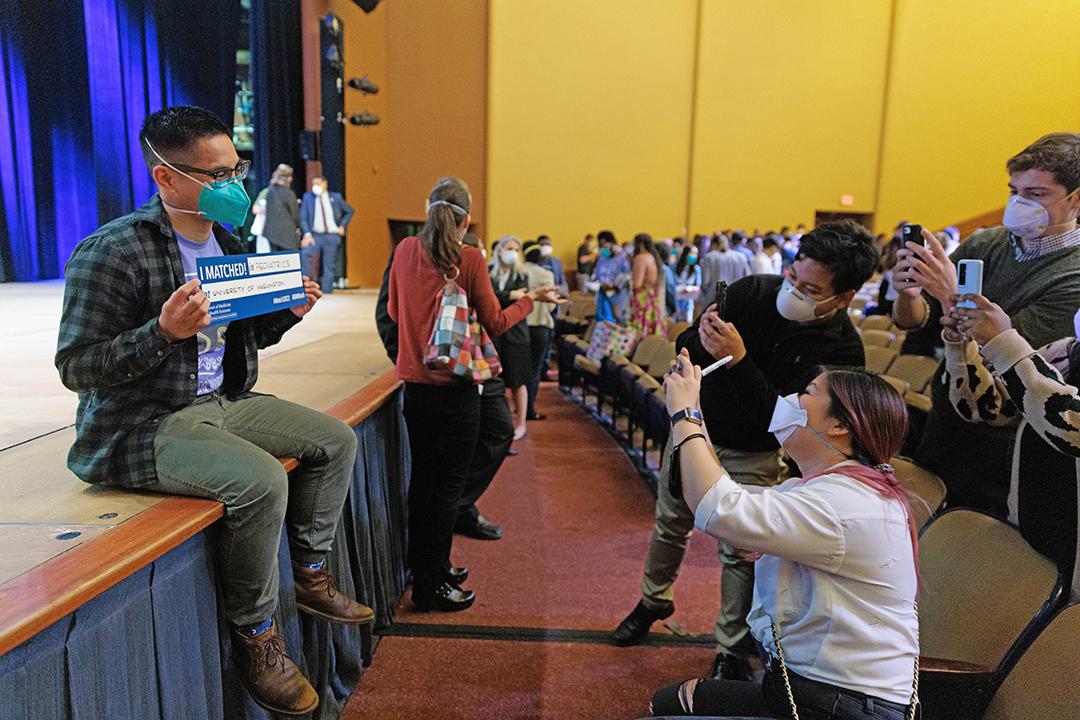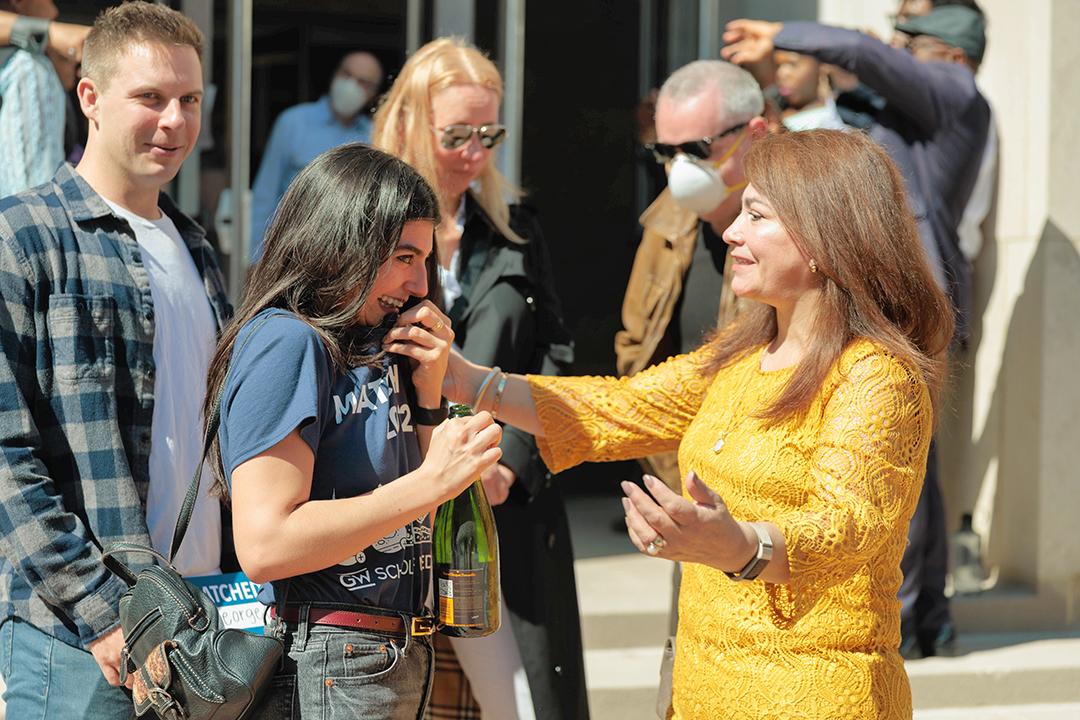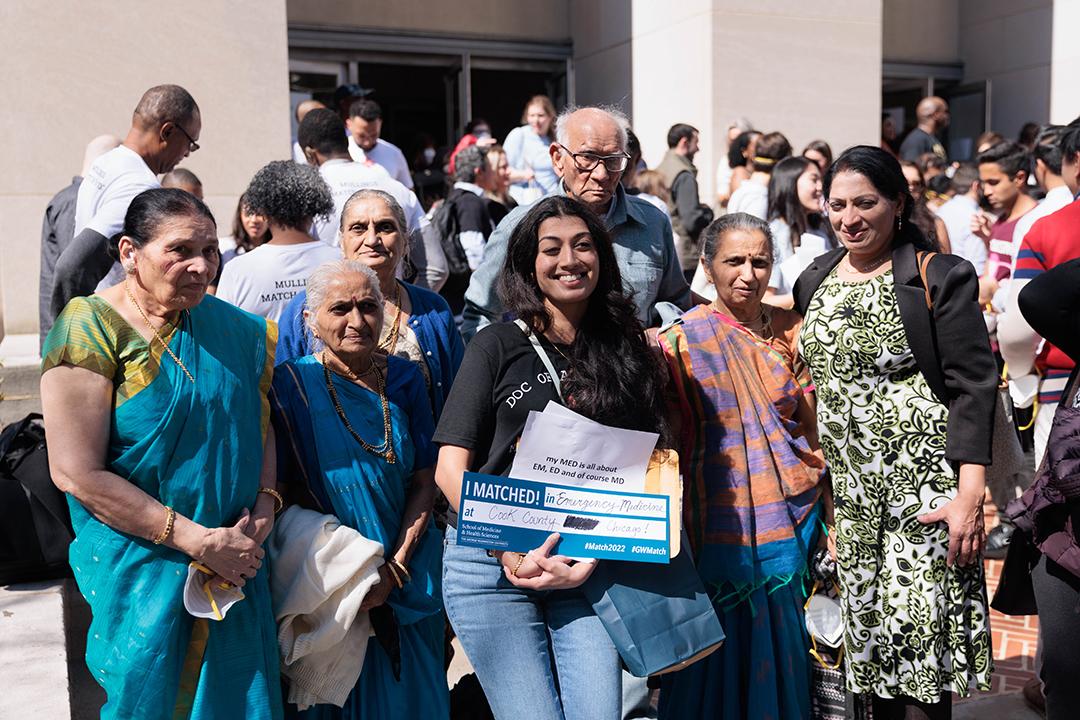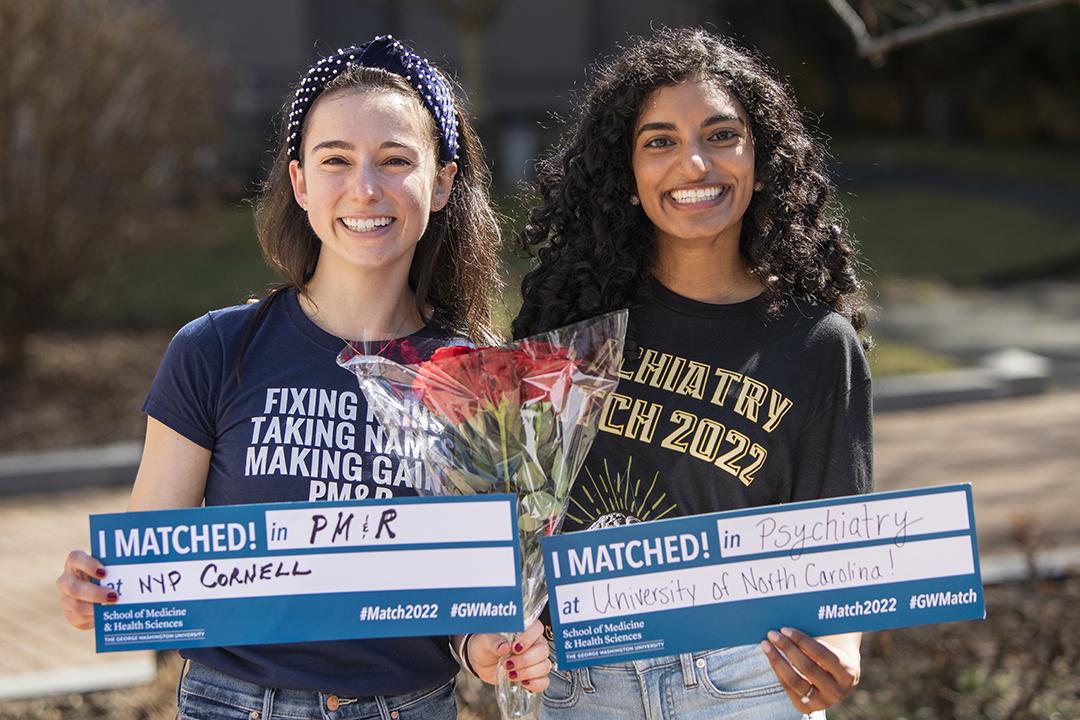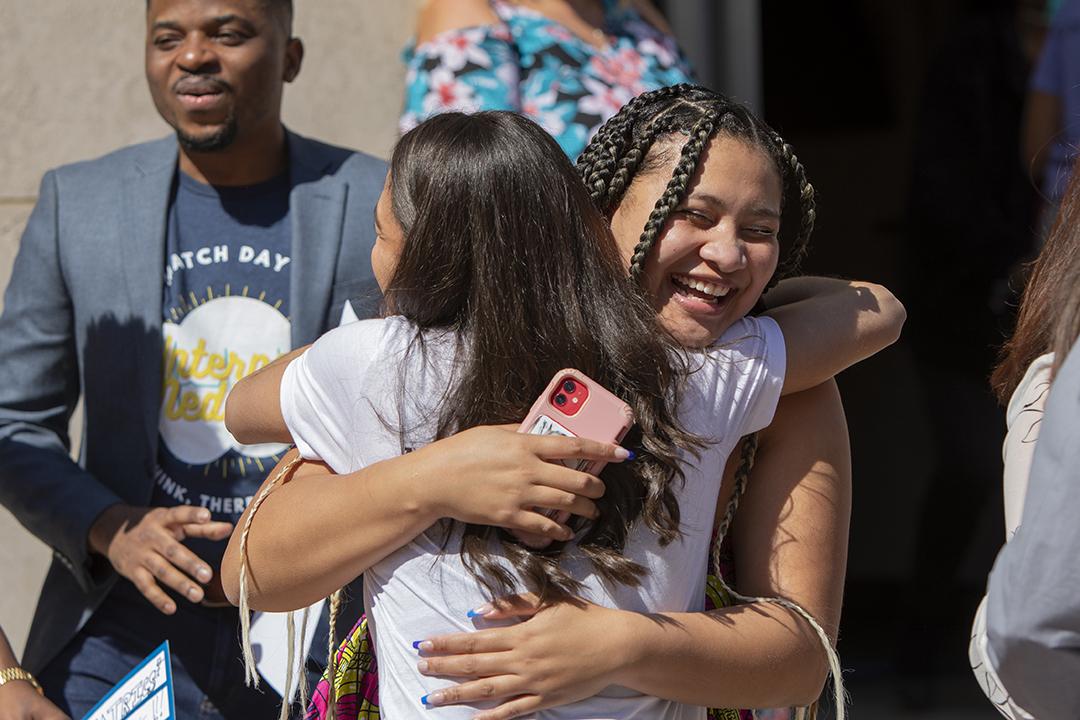By Thomas Kohout
Fourth-year medical students at the George Washington University (GW) School of Medicine and Health Sciences (SMHS) gathered in Lisner Auditorium with family, friends and faculty to celebrate one of the most significant milestones in a budding physician’s life, Match Day. On March 18, they, with fourth-year medical students across the country, simultaneously received envelopes from the National Residency Matching Program (NRMP) informing them where they will be completing their medical training.
“Match Day is what tells you what the next chapter of your life will be like,” said Kelsi Knapp, a GW medical student who will pursue a specialty in pediatrics at Monroe Carell Jr. Children’s Hospital at Vanderbilt. “You know you’re going to graduate, but you have no idea where you’re going to match. Graduation is like the cherry on top, but this is the most impactful moment of your life, and the most unknown.”
The NRMP was established in 1952 to standardize the residency application process, using a blind system to pair up medical students with residency programs and ensure all receive their top choices, or as close to the top choice as possible.
After an extensive interview process, students and programs submit their rankings. The NRMP then dumps that data into a mathematical algorithm to sort the applicants. The process, according to the NRMP, is applicant-proposing, meaning student preferences initiate program placement.
In her first in-person Match Day as dean of GW SMHS, Barbara Bass, who also serves as vice president of health affairs and CEO of the GW Medical Faculty Associates, beamed as she looked out before the buzzing crowd. “I’m so proud of each and every one of you, and we’re here to celebrate your future after this remarkable time that you’ve been students with us,” she said.
“When you open those envelopes,” added Bass, “just realize that you’re going to a place that’s going to really care about you and help you become the person that you aspire to be. Blossom where you’re planted, wherever that may be, and you will be a star going forward and bloom beautifully.”
As the clock ticked toward noon, EDT, when results would be officially revealed, students got a congratulatory Cameo message from ophthalmologist Will Flanary, a TikTok sensation known to fans as Dr. Glaucomflecken.
“You’re all about to do just incredible things,” said the ophthalmologist and social media jokester, renowned for his humorous take on health care. “It’s going to be a long road, residency is going to be hard, but it’s going to be one of the most rewarding and exciting experiences.
“It’s also a bit of a roller coaster,” he added, “but when comes down to it, roller coasters are fun, so enjoy the ride.”
This year 176 GW SMHS MD students are about to board that roller coaster at many of the most significant residency programs nationwide. GW graduates will train in specialties such as internal medicine, pediatrics, obstetrics-gynecology, psychiatry and emergency medicine at programs including Barnes Jewish Hospital, Case Western Reserve, Memorial Sloan Kettering and the University of California San Francisco Medical Center, as well as GW.
“I want to go into pediatrics and medical genetics,” said Randy Ray, who matched at Boston Children’s Hospital, the top-ranked pediatric hospital in the country and a leading site for the emerging subspecialty.
“Genetic information is starting to get more and more integrated into clinical care,” continued Ray, who was a humanitarian aid worker for five years before coming to GW for medical school. “I want to provide care for complex patients and their diseases, but I also want to help expand the diversity in the Human Genome Project, because right now about 80 percent of it is people of European ancestry and very few people of African descent.”
Jordan Mullings also had a very firm idea of what he was looking for and what specialty he wanted to pursue following graduation.
“Emergency medicine is the one specialty where no matter who you are or what your background is, rich or poor, everybody gets treated the same,” Mullings said, adding, “that’s really attractive.”
For his choice of programs, Mullings’ criteria were clear. “It has to be a really supportive environment … with a demonstrated track record of producing excellent clinicians who are socially conscious, with diverse programs and opportunities.”
Fitting the bill was Highland Hospital, part of the Alameda Health System in Oakland, California.
Nidki Shah landed her top choice, staying at GW to train under many of the faculty members who inspired her to choose training in dermatology.
“I’m just really excited to be part of an amazing program, and I’m grateful to be working to become part of this specialty,” Shah said, citing the impact dermatology conditions have on patients’ quality of life. “Dermatological diseases are more than skin deep. … I think that was very intriguing to me of how much your skin can tell you about what’s going on inside your body.”
Match Day is significant event for more than just the students. The GW SMHS International Medical Program (IMP) and the Office of Graduate Medical Education both had students to place and slots to fill.
“I am very happy and proud of our research fellows for their dedication, commitment and hard work and [I am] thrilled to see three of them matched at GW!” said Huda Ayas, Ed.D. ’06, M.B.A. ’98, M.H.S.A. ’93, associate dean for international medicine and founding executive director of IMP. Four IMP research fellows from the 2021–22 cohort, and one fellow from the previous cohort, matched this year.
“We had 112 positions in the match and filled our entire quota on the first round,” said Harold Frazier, associate dean for graduate medical education at SMHS. “The program directors are extremely excited about the outstanding quality and caliber of the incoming class.”
Of the new residents, according to Frazier, 30 of them came from regional medical schools, including the University of Virginia, Georgetown, Johns Hopkins, the University of Maryland and Virginia Commonwealth University. Sixteen members of the incoming class of residents will be graduates of GW SMHS.
To see where the GW SMHS Class of 2022 matched, Click Here.


